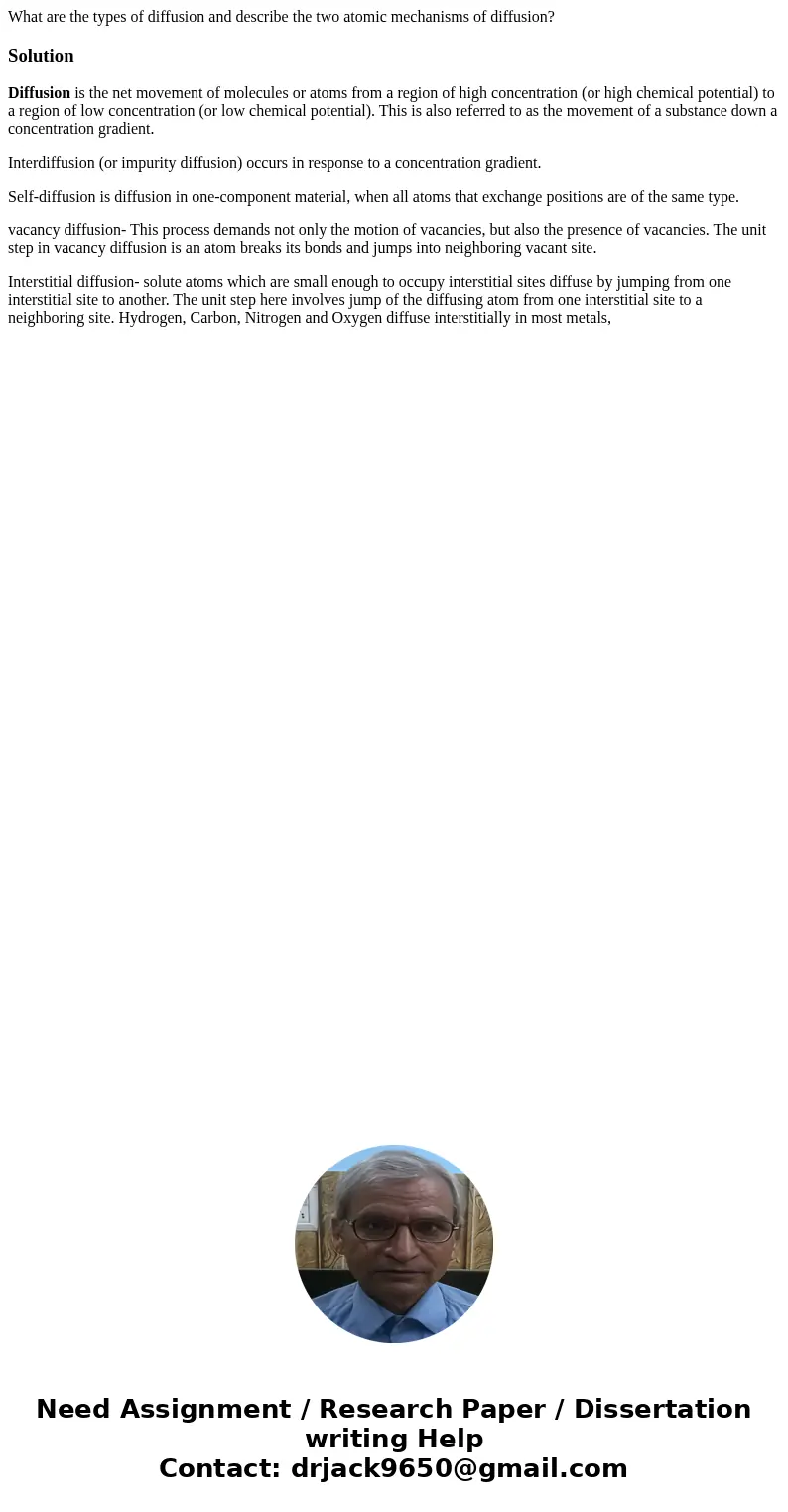What are the types of diffusion and describe the two atomic
Solution
Diffusion is the net movement of molecules or atoms from a region of high concentration (or high chemical potential) to a region of low concentration (or low chemical potential). This is also referred to as the movement of a substance down a concentration gradient.
Interdiffusion (or impurity diffusion) occurs in response to a concentration gradient.
Self-diffusion is diffusion in one-component material, when all atoms that exchange positions are of the same type.
vacancy diffusion- This process demands not only the motion of vacancies, but also the presence of vacancies. The unit step in vacancy diffusion is an atom breaks its bonds and jumps into neighboring vacant site.
Interstitial diffusion- solute atoms which are small enough to occupy interstitial sites diffuse by jumping from one interstitial site to another. The unit step here involves jump of the diffusing atom from one interstitial site to a neighboring site. Hydrogen, Carbon, Nitrogen and Oxygen diffuse interstitially in most metals,

 Homework Sourse
Homework Sourse